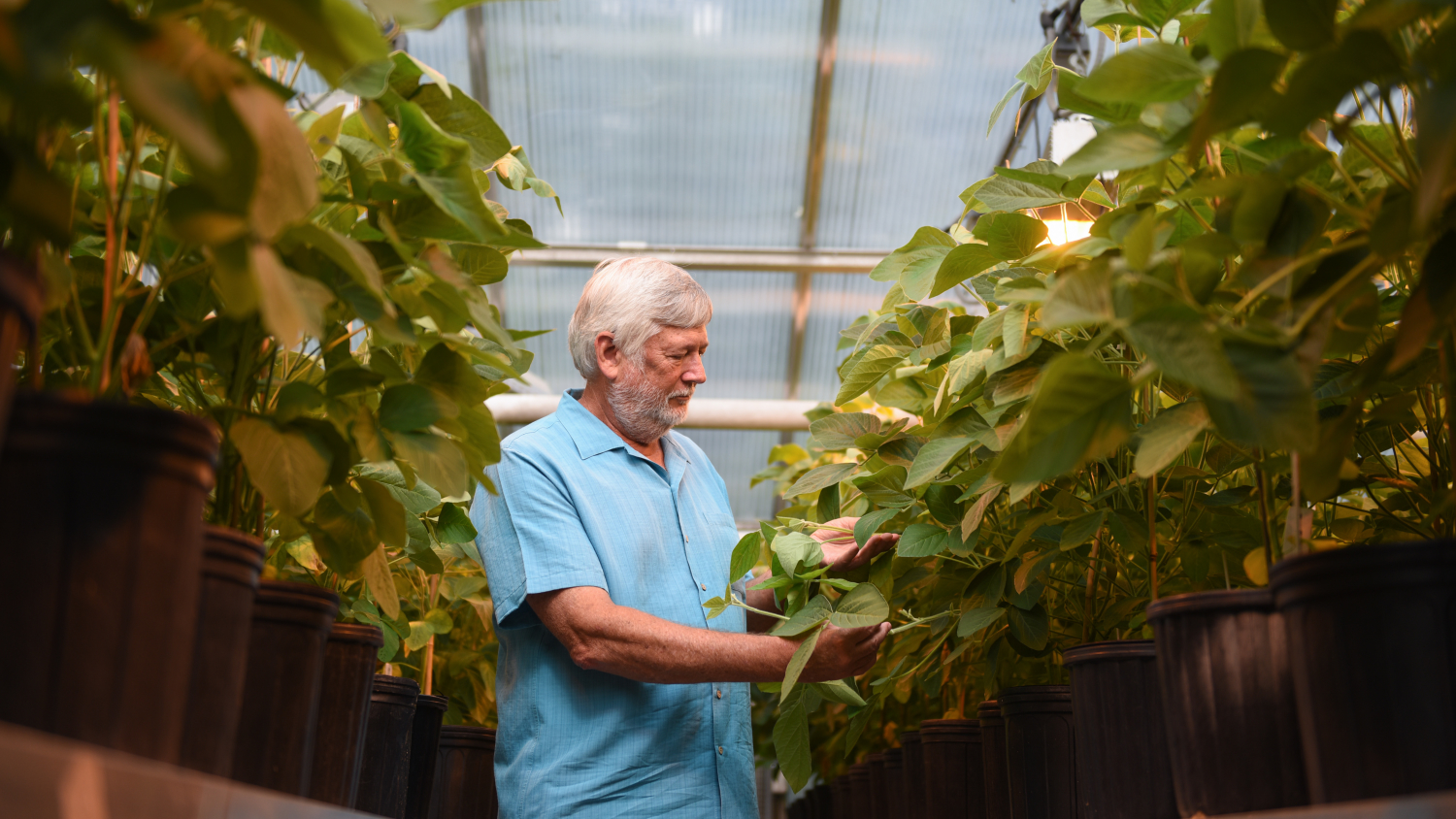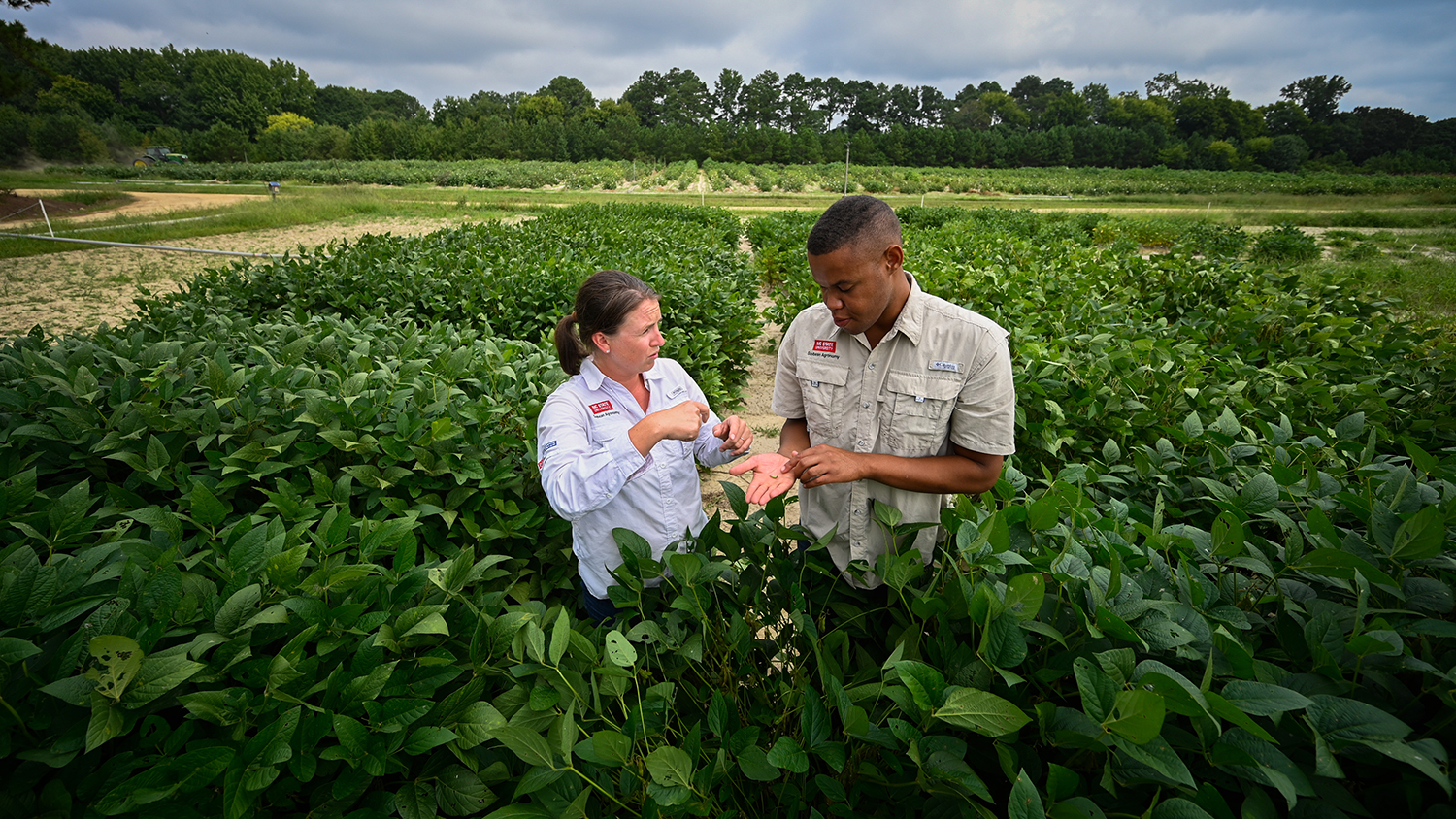Routing Drought Through Team Science

The #1 environmental limitation to U.S. soybean yields?
Drought, especially when it hits in August.
Tommy Carter, a U.S. Department of Agriculture–Agricultural Research Service geneticist and professor in NC State’s Department of Crop and Soil Sciences, is leading the way to develop new soybean cultivars with better drought tolerance.
For more than 30 years, Carter has been exploring the genetic diversity of soybeans in order to breed beans better suited to the varying growing conditions across the country.
Partnering for Success
Carter began his work with the USDA in 1981, just after he’d earned his Ph.D. at NC State. “Early in my career, we were getting lots of signals that the soybean cultivars we were growing in the United States had a very narrow genetic base. They were as similar as brother and sister,” he recalls. “We also had just enough data nationally to realize that when you started looking at soybean genetics under drought stress, there just wasn’t much variability.
‘’When it’s dry in August, yields go down,” he adds. “And there was nothing else that you could point to at a national level that could explain the ups and downs of yield from one year to the next.”
Carter says that partnerships with scientists at the USDA, NC State and other universities have been integral to shedding light on the genetics of drought tolerance. Together they’ve also yielded advanced tools and knowledge useful for plant breeders, including those within private industry.
Tommy Carter, a USDA-ARS professor at NC State, has spent more than 30 years breeding drought resistant soybeans.
Looking Near and Far
To address the issue, Carter looked to the soybean’s ancestral home in Asia for wild and cultivated soybeans with traits different from those found in the United States. And he looked closer to home for a place to test that germplasm — a place where summertime drought was more the rule rather than the exception.
That place, the Sandhills Research Station in Jackson Springs, is part of North Carolina’s 18-station agricultural research station network managed by NC State’s College of Agriculture and Life Sciences and the North Carolina Department of Agriculture and Consumer Services.
The station and its superintendent, Jeremy Martin, have been a big help, Carter says, in supporting what is considered one of the most highly regarded drought-tolerance breeding programs in the nation.
Early successful tests from 1983 to 1988, revealed a Japanese variety of soybean that remained proudly tall during dry spells, while most others wilted. Carter and NC State Professor Bob Patterson investigated this exotic variety extensively.
This involved round-the-clock sampling studies and tromping through soybean fields at midnight to retrieve leaves. Results from this early work were foundational to the following decades of drought tolerance breeding.

Breakthrough ’Beans
In 2015, after testing thousands upon thousands of different types of soybeans, Carter released the first drought-tolerant soybean cultivar with yields as high or higher than others that were grown in the southeastern United States. There are more in the pipeline.
Carter credits university scientists and students for helping advance soybean breeding efforts, and he says he is encouraged by the N. C. Plant Sciences Initiative at NC State. He hopes the initiative will lead to improved data-gathering drone technology that would speed the slow process of plant breeding.
Meanwhile, Carter continues to find his work rewarding.
“It’s been great fun to do this work. It’s not only an adventure into the unknown,” he says, “it’s also really meaningful for growers.”
- Categories:


